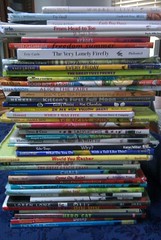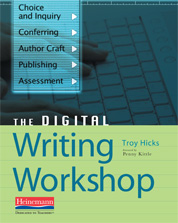“A teacher’s job ...is always to bridge from the known to the new .... Our job is not to wish that students knew more or knew differently. Our job is to turn students’ knowledge and the diversity of knowledge we encounter into a curricular strength rather than an instructional inconvenience.
Pearson 1996
In many ways I miss the earlier days of my teaching. I miss the first few weeks of school when we could get to know our students and build our community of learners. We can still do that, but there is now this pressing need to assess our learners early. We are in the first days of school and students are leaving my room to be assessed by intervention teams.
Now, don't get me wrong. I'm all for having helpful information about my learners. I'm all about knowing where they are and where they need to go. I think it's important to know what they have under control to find ways to support their learning. I assess my students often, and adjust my instruction accordingly.
I've worked on the intervention side of instruction so I understand the need to get students identified quickly, placed in groups, and positioned for thoughtful instruction. But I'm wondering - just wondering - what would happen if we slowed down a bit in those first weeks? What would happen if we gave learners a few weeks to get back in the groove of school? What would happen if we spent time getting to know what our children CAN do through observation and reflection? What would happen if intervention teams started with the students whose previous year's data demonstrates, without a doubt, they will qualify for services? What if, within the other slots, intervention teachers went into classrooms and worked alongside the teachers to get to know students?
Assessment vs. Observation
So how soon is too soon to assess? This difference between assessment and observation is critical at the beginning of the year. Intentional observation, instead of formal assessment, during the first four to six weeks of school allows children time to get back to what they knew and get comfortable with the teacher and learning environment. It allows us to get to know our students as individuals. This time, will allow the rest of the year to be more focused and intensive in instruction. This time, allows me to see what students know, the strategies they utilize and how they respond to instruction.
In our district we are fortunate to have strong data from our previous year's teachers. I start my year by looking at the previous end of year's assessments. Using previous year's assessment information I can find out strengths of my new learners. I look for strategies they have in place in literacy. I can also find commonalities among students. I place books in baskets on tables which I think would match my learners. Then I watch. I provide opportunities for writing. Then I watch. There are times for conversation. I listen. As students read, write, and talk I confer alongside them to add to what I know about each child as a learner. Read aloud, shared writing, and interactive writing also allow me to discover strengths of my new learners.
Observing Students in the First Weeks
During my time as a Reading Recovery teacher we were taught to begin our weeks of instruction with "Roaming in the Known". My trainer was adamant we respect this time to get to know our students, establish a rapport, and discover all children COULD DO. It wasn't a time to teach, it was a time to observe. It was a time to see what children knew about language, the ways they construct knowledge, the strategies they use to read and write, their ability to monitor and self-correct, and note learning strengths. It wasn't a time to record what they couldn't do. It really wasn't about what they couldn't do. It was about discovering what they had under control to use their strengths to teach into new learning. I use this "roaming in the known" thinking to guide my observations in my classroom during the first weeks of school.
In the first days of school I prepare my assessment notebook, and take notes about what I notice students are able to do. I also take the time to find out about their interests and attitudes about literacy. Here are some questions I consider as I work with students during the first weeks of school:
- How confident are learners?
- What are their attitudes about reading and writing?
- What do they prefer to read and write about in our workshops?
- Do they read and write with purpose?
- Do they have a sense of story?
- Is there a match between literacies (is there a match between what they know in reading and writing, or a difference between the two)?
- What oral language structures do they use (do these carry over to their writing)?
- Do they monitor and self-correct?
- What is their experience with books, writing, and story?
- What strategies do they have in place for reading and writing?
- What do they know about letters and words?
During the first days of school these questions will guide my thinking as I observe my students during various learning opportunities. Discovering and celebrating all they can do in the first days of school, instead of quickly assessing my students, will give me time to see all they know and how they transfer this knowledge to new situations. It also gives me time to get to know them as readers, writers, thinkers....and the amazing people they already are.

















